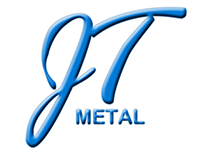High Carbon Steel has poor weldability due to its high carbon content. The welding features are as follows:
(1)poor thermal conductivity, significant temperature difference between the weld zone and the unheated part. When the molten pool cools sharply, the internal stress in the weld can easily form cracks.
(2)it is more sensitive to quenching and martensite is easily formed in the near-seam zone. Because of the action of the structure stress, the near-seam zone produces the cold crack.
(3)because of the influence of high temperature, the grain grows fast, the carbide is easy to accumulate and grow on the grain boundary, which makes the weld weak and the strength of the welding joint decreases.
(4) high carbon steel is more likely to produce hot cracks than medium carbon steel
High carbon steel is a kind of carbon steel with w (c) > 0.6% . It has a greater tendency to harden and form high carbon martensite than medium carbon steel, and is more sensitive to the formation of cold cracks.

At the same time, the martensite structure formed in the HAZ has hard and brittle properties, which leads to the decrease of the plasticity and toughness of the joint. Therefore, the weldability of high carbon steel is rather poor, and special welding process must be adopted, to ensure the performance of the connector.
Therefore, in the welding structure, generally rarely used. High carbon steel is mainly used for machine parts requiring high hardness and wear resistance, such as rotary shafts, large gears and couplings.
In order to save steel and simplify processing technology, these machine parts are often made of welded structure. In the manufacture of heavy machinery, high carbon steel parts will also encounter welding problems.
When making the welding process of high carbon steel parts, it is necessary to analyze all kinds of possible welding defects and take corresponding welding process measures.
Post time: Aug-14-2023

